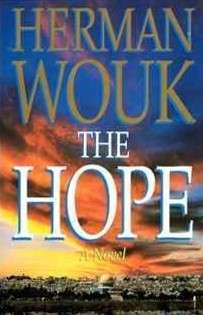
The Hope (Magle)
The Hope (Danish: Håbet) is a work for brass band, percussion, choir, and organ written in 2001 by Frederik Magle, depicting the Battle of Copenhagen in 1801. It consists of two movements with the first being purely instrumental. The choir enters in the second movement using text from Psalm 27.
The music was commissioned by the Admiral Danish Fleet (Royal Danish Navy Operational Command) for the 200th anniversary of the battle in 2001. The Hope also commemorates Olfert Fischer (Commander of the Danish fleet in 1801) who lies buried in the Reformed Church, Copenhagen, where the first performance of the work took place on April 1st, 2001, with the Royal Danish Navy Band, the choir of the Reformed church, and Frederik Magle himself on organ.
The Hope is not pure program music, but includes highly visual elements in the description of the battle. The percussion is placed both in front and behind the audience, creating a special effect when the bass drum, sounding from behind the audience, is answered by cymbals in front - and the other way round - backwards and forwards above the audience, »as if cannon balls are flying over their heads«.
The Hope
The Hope may refer to:
See also

The Hope (sculpture)
The Hope is a sculpture by Nicky Imber depicting a woman proudly raising her child to the sky symbolically heralding a new generation. It is named after the Israeli national anthem, "Hatikva" and is part of the Holocaust Memorial Park entitled "From Holocaust to Resurrection", located in Karmiel, Israel.
Background and Aesthetics
Escaping the Nazi concentration camp in Dachau, Imber promised himself to dedicate his artistic life to perpetuating the memory of the Holocaust. In 1978 he started work on the Holocaust Memorial Park in Karmiel.
The Hope statue is the tallest sculpture in the third part of the series. The sculpture is made of bronze with a green patina, and took Imber's crew of six approximately five months work to go through the cement and wax stages before getting to the final bronze casting. As of 2013, the statue's approximate worth is 1.2 million US dollars. Imber's smaller signed versions of the sculpture, measuring about 38 cm, have been selling for approximately 26 thousand US dollars

The Hope (novel)
The Hope is a historical novel by Herman Wouk about pivotal events in the history of the State of Israel from 1948 to 1967. These include Israel's War of Independence, the 1956 Sinai War (known in Israel as "Operation Kadesh"), and the Six-Day War. The narrative is continued in the sequel The Glory.
Plot summary
These crucial events are mainly seen through the eyes of two fictional characters, who meet near the beginning of the novel: Zev Barak and Joseph Blumenthal (nicknamed "Don Kishote"). Wouk portrays several real-life Israeli leaders: David Ben-Gurion, Moshe Dayan, Golda Meir, Mickey Marcus, Yigael Yadin, Ariel Sharon, Motta Gur, and others. Both the real and fictional characters are portrayed as brave and decent human beings with character flaws, who manage to lead Israel through three major wars in spite of the nation being surrounded, outgunned, and torn by internal conflicts as well as external threats.
Zev is a junior officer in the unsuccessful attacks on Latrun. Joseph Blumenthal, newly arrived in Israel, joins a new Israeli unit of troops who bravely attack. He acquires the nickname "Don Kishote" when teased about riding a mule wearing an old helmet ("Don Kishote" is Don Quixote in Hebrew). Both Zev and Kishote choose to stay in the Israeli army when the War of Independence ends.
Podcasts:

